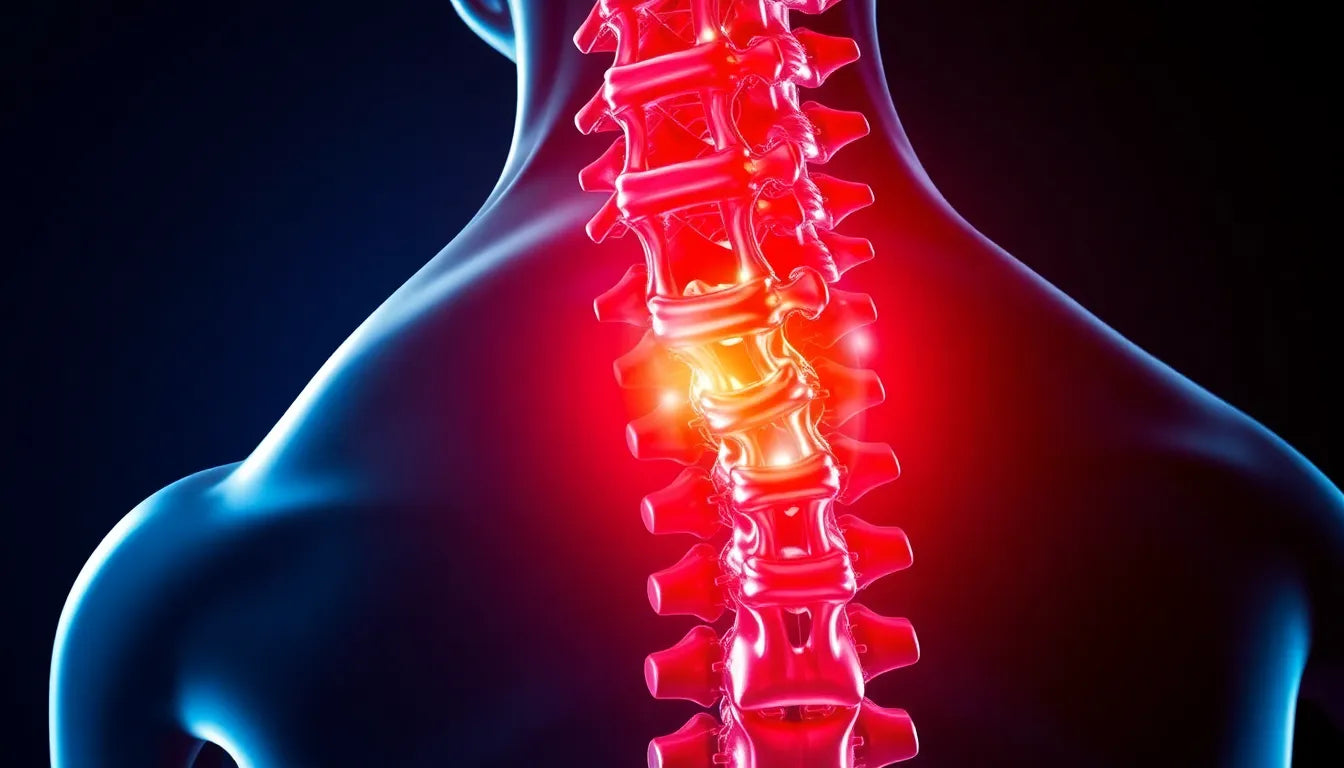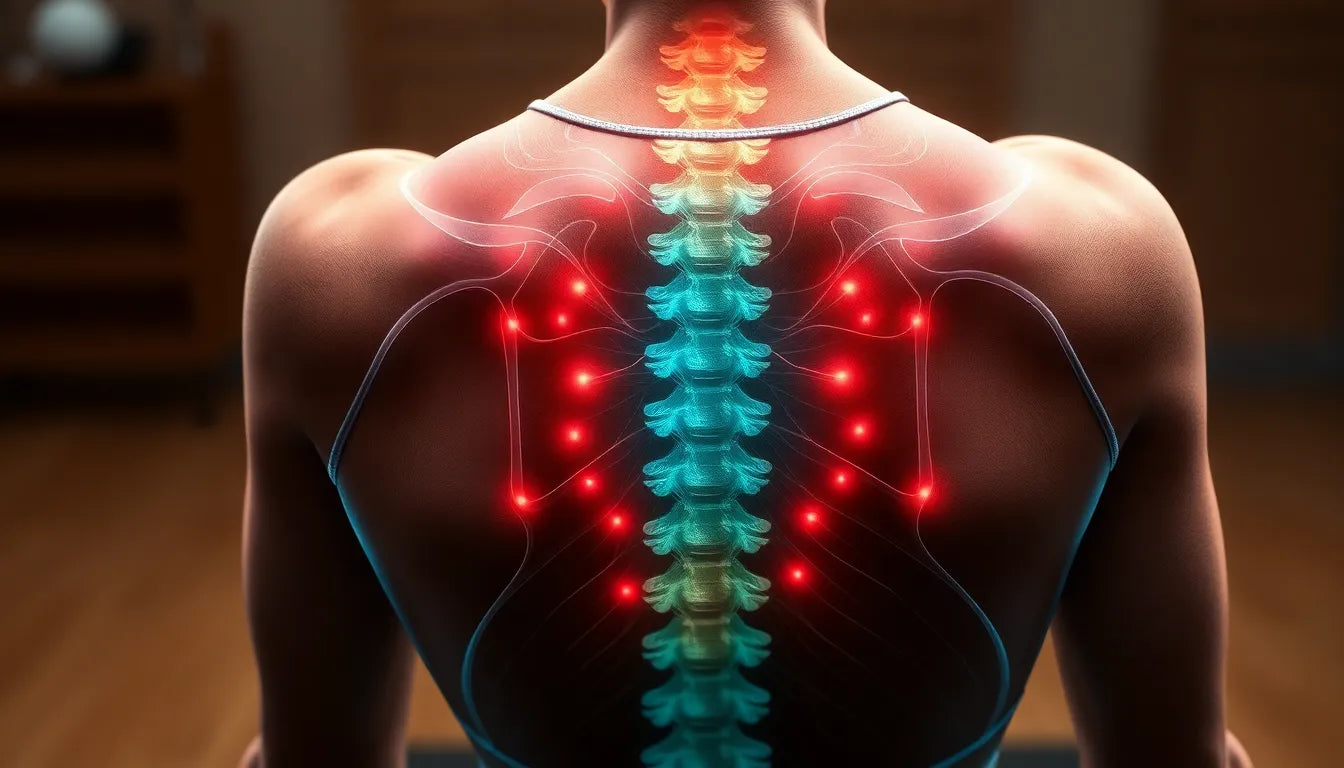Back pain is a common ailment affecting millions of people worldwide, often disrupting daily activities and diminishing quality of life. While the causes of back pain are numerous, one significant and frequently encountered culprit is a herniated disc. Understanding the nature of this condition and its symptoms is crucial for those seeking relief and effective management strategies.
what is a herniated disc?
A herniated disc occurs when the inner gel-like core of a spinal disc protrudes through a tear in its tougher outer layer. This condition can lead to nerve compression, resulting in a variety of symptoms that can range from mild discomfort to severe pain. The protrusion of the disc material can irritate nearby nerves, leading to sensations that may extend beyond the immediate area of the back.
why early detection matters
Recognizing the symptoms of a herniated disc early is vital in preventing further complications and ensuring effective treatment. Early detection allows individuals to seek appropriate medical advice and interventions, which can significantly improve outcomes and reduce the risk of chronic pain or permanent damage. Understanding the signs and symptoms, as well as the diagnostic methods available, is the first step toward addressing this common condition.
common symptoms of a herniated disc
Identifying the symptoms of a herniated disc is crucial for early intervention and effective management. Understanding these signs can help distinguish between a simple backache and a more serious condition requiring medical attention.
pain
Pain is often the most noticeable symptom of a herniated disc. This pain can vary in intensity and location, depending on the disc's position and the nerves affected. For many, it might manifest as localized back pain, particularly in the lower back or neck. However, if the herniated disc presses on nearby nerves, it can cause radiating pain, commonly known as sciatica. This type of pain typically travels down one leg, sometimes reaching the foot, and is often described as sharp or burning.
numbness and tingling
Another common symptom is numbness or tingling in the affected area. This sensation often occurs in the arms or legs, depending on the location of the herniated disc. For instance, a herniation in the lumbar region may cause numbness in the legs, while one in the cervical region might affect the arms. These sensations result from the disc pressing on nerves that serve these areas, disrupting normal nerve signaling.
weakness
Muscle weakness is a significant symptom that can impact mobility and strength. When a herniated disc compresses nerve roots, it can lead to weakness in the muscles served by those nerves. This might manifest as difficulty lifting the foot (foot drop) or a weakened grip. Such weakness can interfere with daily activities, making it challenging to perform tasks that require strength or coordination.
diagnostic process for herniated discs
Accurate diagnosis of a herniated disc involves a combination of medical history, physical examination, and imaging tests. These steps are essential for confirming the presence of a herniated disc and determining its severity.
medical history and physical examination
The diagnostic process often begins with a detailed medical history to understand the patient's symptoms and any potential risk factors. A physical examination follows, where the healthcare provider may perform tests like the straight leg raise test. This particular test helps identify nerve root irritation by assessing pain response when the leg is raised.
imaging tests
Imaging tests are critical in confirming a herniated disc diagnosis. MRI scans are considered the gold standard due to their detailed images of soft tissues, including discs and nerves. They provide comprehensive views that help pinpoint the exact location and extent of the herniation. Other imaging options include CT scans, which offer detailed cross-sectional images, and myelograms, which can highlight nerve compression.
comparative diagnostic tools
Choosing the right imaging test depends on various factors, including the level of detail needed, cost, and availability. Here's a brief comparison:
| Diagnostic Tool | Detail | Cost | Availability |
|---|---|---|---|
| MRI | High detail, excellent for soft tissues | Higher cost | Widely available |
| CT Scan | Good detail, less soft tissue clarity | Moderate cost | Widely available |
role of electromyograms
Electromyograms (EMGs) are sometimes used to assess nerve damage. This test measures the electrical activity in muscles, helping to determine if nerve compression is affecting muscle function. While not as commonly used for initial diagnosis, EMGs can provide valuable information about the extent of nerve damage.
Understanding these symptoms and diagnostic methods can guide individuals in seeking timely medical attention, ultimately leading to better management and outcomes for those affected by a herniated disc.
When to seek medical attention for a herniated disc
Understanding when to seek medical attention for a herniated disc is crucial in preventing further complications and ensuring effective treatment. Certain symptoms warrant immediate consultation with a healthcare provider. If you experience severe pain that does not improve with rest, significant weakness in the limbs, or loss of bladder or bowel control, it is essential to seek medical help promptly. These symptoms may indicate a more serious condition, such as cauda equina syndrome, which requires urgent attention.
Preventive measures and management strategies
Preventing a herniated disc or managing its symptoms involves a combination of lifestyle changes and ergonomic practices. Maintaining a healthy weight through regular exercise can reduce the strain on your spine. Incorporating strength training and flexibility exercises can also help support spinal health. Additionally, practicing good posture and using ergonomic furniture can minimize the risk of disc herniation.
Ergonomic aids, such as adjustable chairs and standing desks, can provide support and reduce pressure on the spine during prolonged periods of sitting or standing. When lifting heavy objects, use proper techniques by bending at the knees and keeping the load close to your body. Small adjustments in daily habits can significantly contribute to spinal health and reduce the likelihood of developing a herniated disc.
Conclusion
Recognizing the symptoms of a herniated disc and seeking timely diagnosis are essential steps in managing this common condition. Early detection can prevent complications and improve treatment outcomes. By adopting preventive strategies and utilizing ergonomic solutions, individuals can maintain back health and reduce the risk of herniated discs. Awareness and proactive management are key to living a pain-free life.
Frequently Asked Questions
What are the initial signs of a herniated disc?
The initial signs of a herniated disc often include pain, numbness, tingling, or weakness in the back, arms, or legs, depending on the disc's location.
How is a herniated disc diagnosed?
A herniated disc is diagnosed through a combination of medical history, physical examination, and imaging tests such as MRI or CT scans.
Can herniated discs heal on their own?
Many herniated discs improve over time with conservative treatment, but medical evaluation is crucial to determine the appropriate course of action.
What treatments are available for herniated discs?
Treatment options for herniated discs range from physical therapy, medications, and ergonomic aids to surgical interventions in severe cases.
How can I prevent a herniated disc?
To prevent a herniated disc, maintain good posture, use ergonomic furniture, exercise regularly, and avoid heavy lifting without proper technique.


















